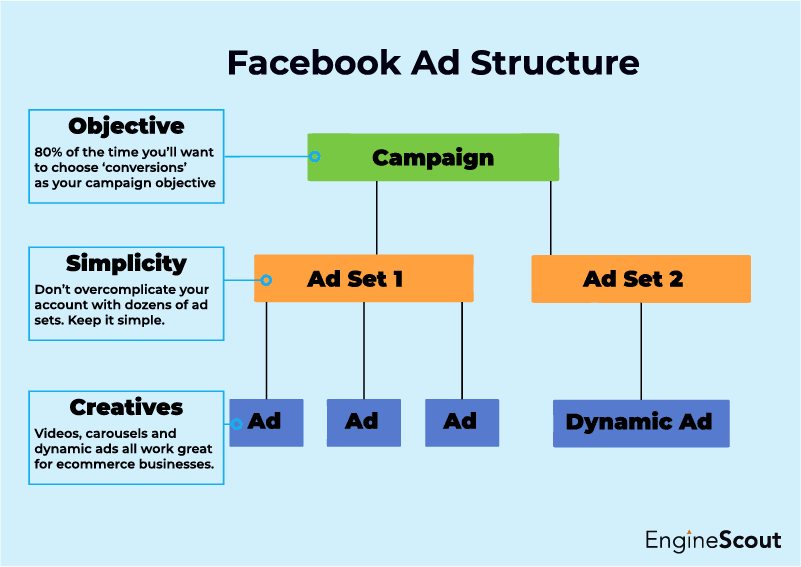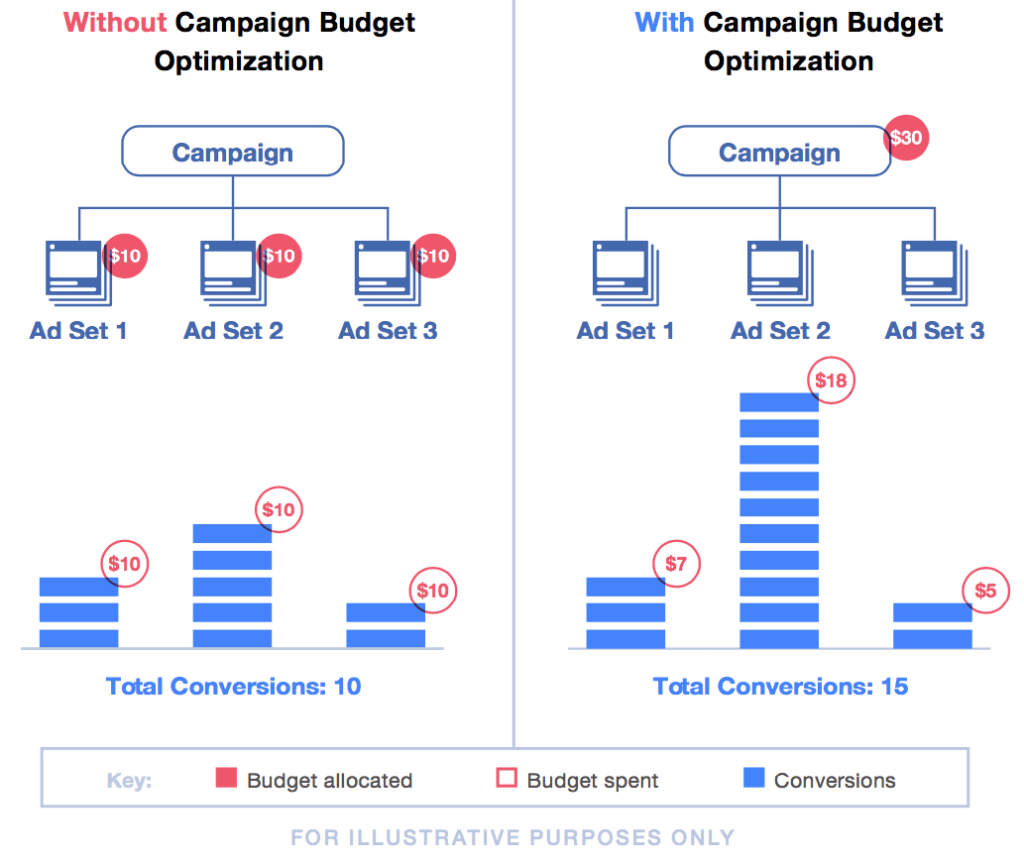Meta has recently overhauled its Facebook Ads campaign structure in 2025, introducing significant changes aimed at streamlining the advertising process and enhancing performance through automation and AI-driven optimization. These updates reflect Meta’s ongoing commitment to simplifying ad management while leveraging advanced technologies to improve campaign outcomes.
Key Changes in the 2025 Facebook Ads Campaign Structure
1. Simplified Campaign Hierarchy
Meta has restructured the campaign hierarchy to promote efficiency and better alignment with AI optimization. The traditional three-tier structure—Campaign, Ad Set, and Ad—has been refined to centralize key settings:
-
Campaign Level: Focuses on overarching objectives and budget allocation.
-
Ad Set Level: Now houses targeting, placement, and bidding options, consolidating settings that were previously distributed across different levels.
-
Ad Level: Dedicated to creative elements, such as images, videos, and ad copy.
This consolidation reduces complexity and allows for more cohesive management of campaign components.
2. Emphasis on Campaign Budget Optimization (CBO)
Campaign Budget Optimization has become the default setting, enabling Meta’s AI to automatically distribute budgets across ad sets to maximize results. This shift encourages advertisers to focus on broader campaign strategies rather than micromanaging individual ad set budgets.
3. Broader Targeting with AI Assistance
Meta’s AI now plays a more significant role in audience targeting. Advertisers are encouraged to use broader targeting parameters, allowing the AI to identify and reach the most relevant audiences based on campaign goals. This approach can lead to improved performance by leveraging machine learning to optimize audience selection.
4. Dynamic Creative Optimization
The updated structure supports dynamic creative optimization, where multiple ad components (headlines, images, calls-to-action) can be automatically combined and tested to determine the most effective combinations. This feature enhances ad personalization and performance without requiring manual A/B testing.
5. Integration with Google Analytics
Meta has introduced integration with Google Analytics, allowing advertisers to gain deeper insights into campaign performance. This integration facilitates comprehensive tracking of user interactions and conversions across platforms, enabling more informed decision-making and optimization.
Implications for Advertisers
These structural changes signify a move towards greater automation and reliance on AI-driven decision-making in ad campaigns. Advertisers may need to adapt by:
-
Trusting AI Optimization: Allowing Meta’s algorithms to manage budget distribution and audience targeting can lead to improved efficiency and results.
-
Focusing on Creative Quality: With AI handling many optimization tasks, the quality and relevance of ad creatives become even more critical to campaign success.
-
Leveraging Integrated Analytics: Utilizing tools like Google Analytics in conjunction with Meta’s reporting can provide a more comprehensive view of campaign performance.
While these changes may require a shift in strategy and mindset, they offer opportunities for enhanced performance and streamlined campaign management.
Visual Representation
To better understand the new campaign structure, refer to the following visual aid:
For a more in-depth exploration of these updates and practical guidance on adapting your advertising strategies, consider watching the following video:



